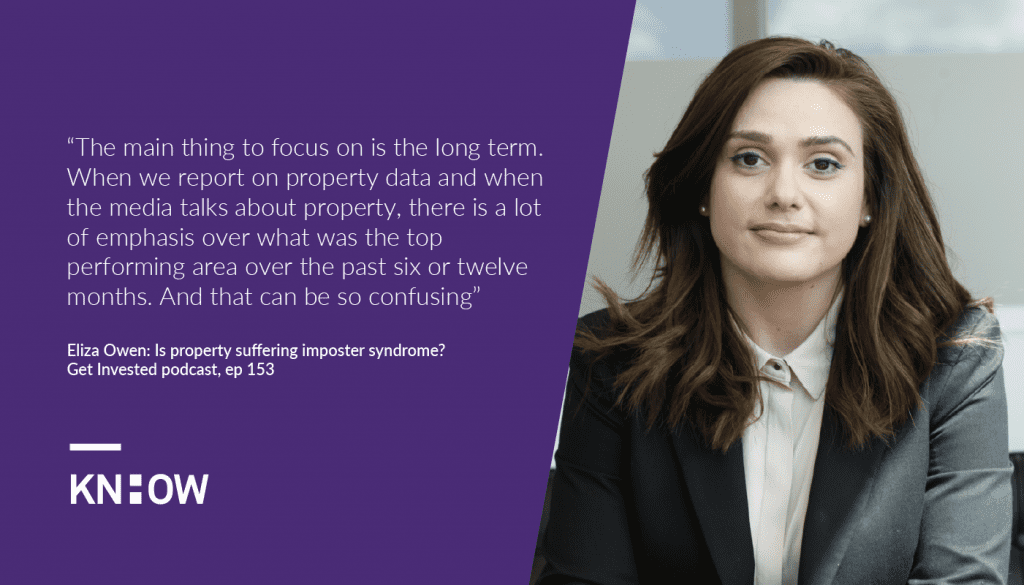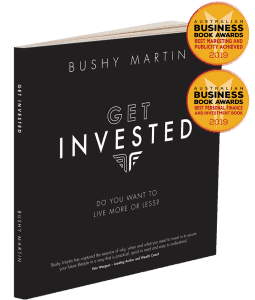In uncertain times, key property data indicators and independent market research can help guide decision making for property investors, buyers and sellers, says one of Australia’s top property market analysts Eliza Owen.
The pandemic, a booming Australian residential property market and misleading media coverage has caused confusion for many, but the right data can cut through the noise.
But what exactly is the right data, and how can we use it? Eliza, who is the Head of Australian Research at top property data house CoreLogic Australia, explained how to avoid key mistakes.
“Knowledge has been so important for people during the pandemic because it’s been such an uncertain time. And I’m very proud that we [CoreLogic] were able to produce research, partly looking at those high frequency indicators, but also looking at our breadth and depth of historical data to say ‘ok, this is how housing markets have performed in previous negative economic shocks. This is going to inform potentially how the market performs,” Eliza told KnowHow founder Bushy Martin on the Get Invested podcast.
Instead of just using median values, Eliza said more comprehensive metrics can be drawn upon from individual properties to determine potential market activity and growth rates.
“The home value index is a metric where we’re (CoreLogic) imputing the value of every single property in a region. We’re evaluating the entire value of that property market based on each of the properties in that region. And then the index produced represents the change in that total value over time,” she said.
“So, it’s a very high frequency metric that you’re tracking. It’s a very comprehensive metric because you’re looking at every property, not just the the one that sits in the middle. But we can also break that up and divide it by segments of the market. ‘What’s the bottom 25% of the market doing? What’s the middle segment of the market doing? What’s the high end doing?’
“Through that, we’re able to understand dynamics like, ok, the high end of the market in Sydney and Melbourne is more volatile, which means it has higher highs and lower lows. So during a downturn, everyone freaks out about maybe how the interest of Melbourne has lost most value. But because of those dynamics, we know actually it’s probably going to have the highest growth rates during the next upswing. So it’s just insights like that.
“We’re also tracking orders of valuations for the purchase of property, which gives us a sense of mortgage activity as well.
“[We] also utilised metadata through the pandemic, which basically means we’ve been able to take data around the number of comparative market analysis reports or property reports that real estate agents generate when they’re trying to win a listing. So even by taking account of those property reports and tracking the volume of them, over time, we’re able to get a sense of how many or the direction of new listings that come onto the market because we’re tracking that metadata.”
But with hyped up metrics often trumpeted through mainstream media, it’s important that property investors consider the long term property data, rather than getting caught up in the short term findings.
“I think when we report on property data and when the media talks about property, there is a lot of emphasis over what was the top performing area over the past 12 months or the past six months. And that can be so confusing,” Eliza explained.
“I totally understand why we do it. It’s fun and it’s engaging to think about who won the most money this year for earning property. But ultimately, the property market moves in these very dynamic cycles and sometimes segments of the market don’t move in unison.
“[For example], the high end of the property market, so the top 25% of values in Sydney and Melbourne, tend to be what we call first movers. So they might exhibit a turn in the property cycle before the middle part of the market or the low end of the market, which means that when you look at a 12 month growth rate, the high end suburbs might look like the best performers or the worst performers in a 12 month space, but because it’s part of a larger cycle, that’s certainly a temporary part of the movement in prices.
“In fact, look at long term growth rates, or what we call annualised growth rates, which is basically a typical annual rate of return over five or ten years based on what’s been returned in the capital growth and in property. The long term annualised growth rates are very similar for a lot of submarkets across Sydney and Melbourne. It doesn’t matter where in the market you buy, a long term annualised growth rate, say over a 10 year period, might be 4 – 5% for all the submarkets of Sydney and Melbourne.
“So I think just that focus on the long term and also just that knowledge that it’s time in the market not timing the market that is really important. We (CoreLogic) produce a Pain and Gain Report, which looks at the portion of properties that have sold at a profit and sold at a loss. And invariably it’s always those properties that have been held for a longer period of time – 10, 20, 30 years – that have the most profit, whereas those properties that have made a loss were likely to have been held for shorter period of time.
“So I think that can create a lot of fear. ‘Am I going to buy into a housing market that loses 10% of its value in a year?’ Maybe you will, but over the period of 10 years, maybe it’ll gain much more. So I think just keeping a view of those long term growth prospects is probably the most important thing.
“And also, I guess at that personal level, just buying where you can afford, and that’s a conversation that people should be having with qualified professionals.”
Eliza reminded buyers, sellers and investors that you don’t need to be an expert to make sense of property data.
“I just remind people that understanding the way the property market works, it’s not beyond you because it is you. We are the economy. We will all have a relationship to real estate,” she said.
“It’s important to just try and keep informed where you can, because if you don’t understand the words in a debate, you’re not going to be able to formulate an argument … and I encourage everyone to stay engaged and ask questions and read widely about it.”
Listen to the full interview here.
Want to Know How you can build wealth with the help of leading, qualified experts? Talk to the team at KnowHow, now.




